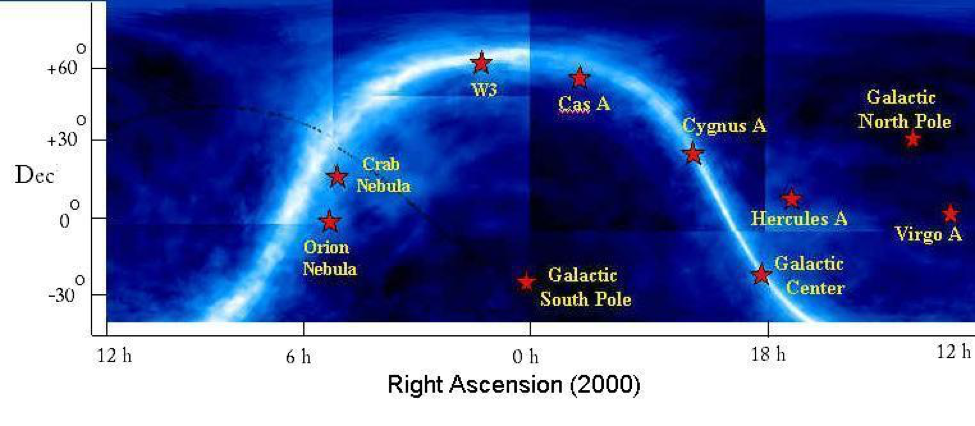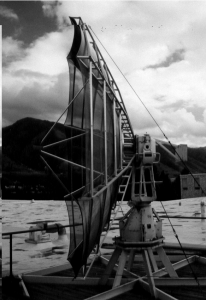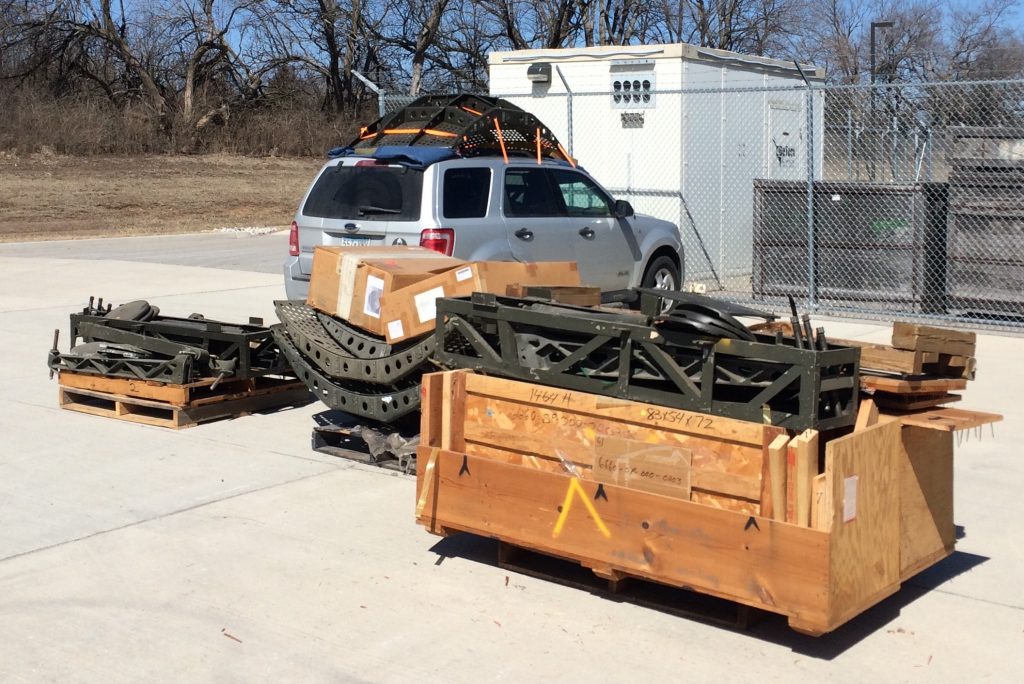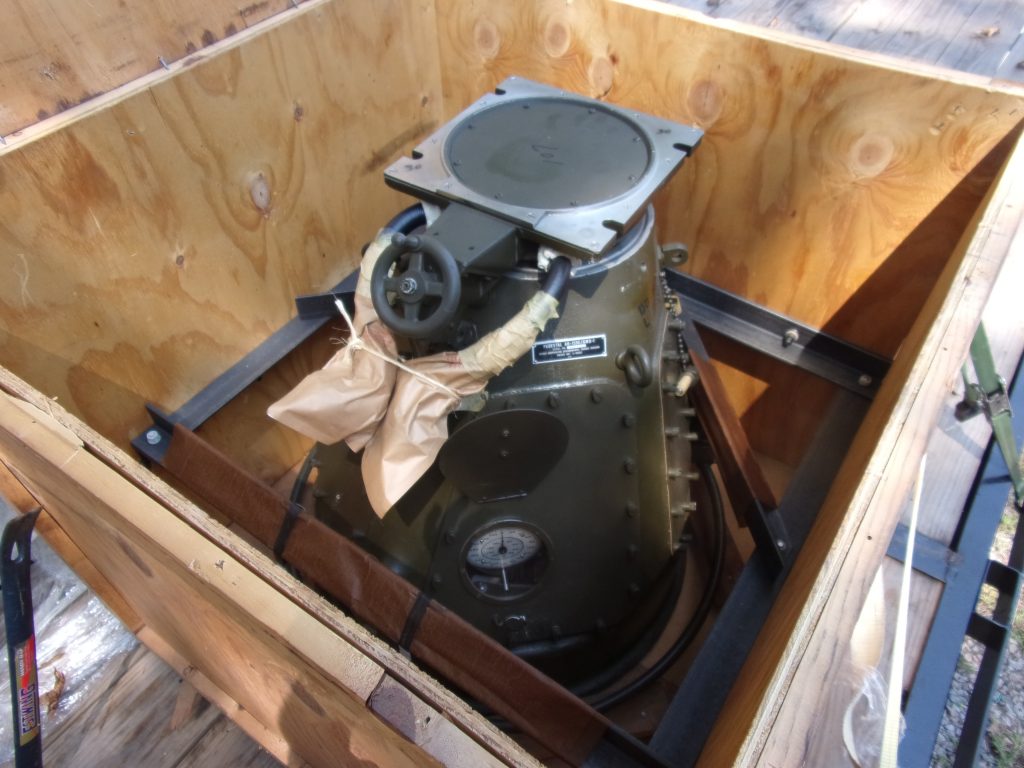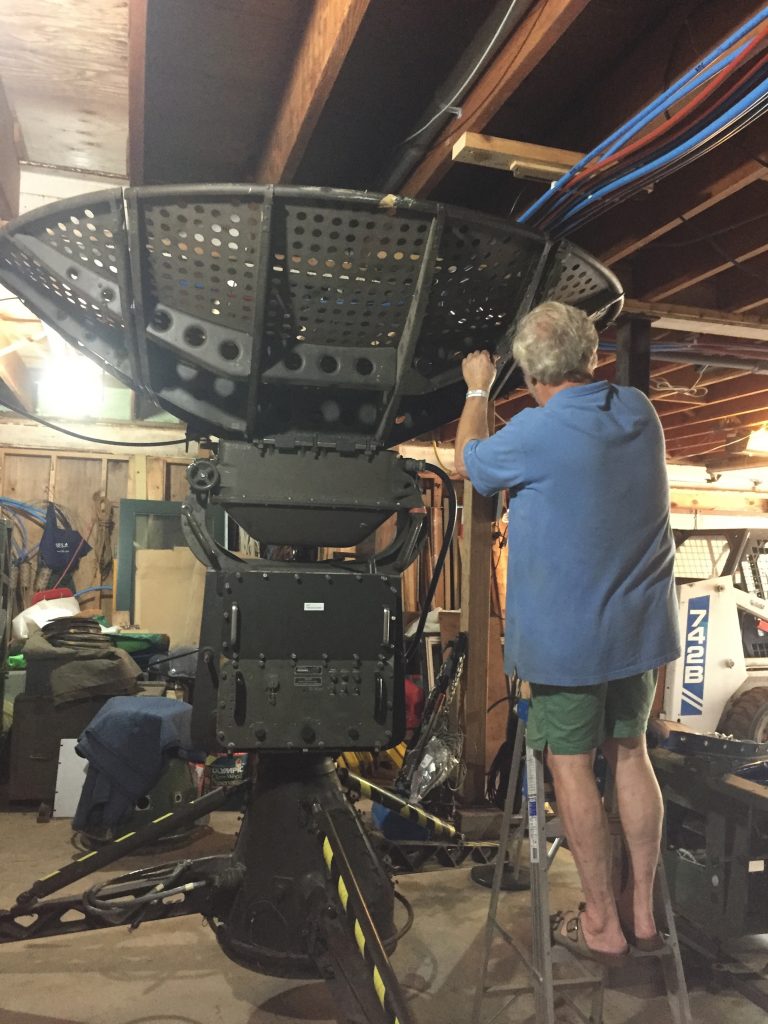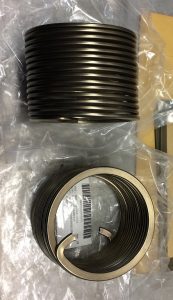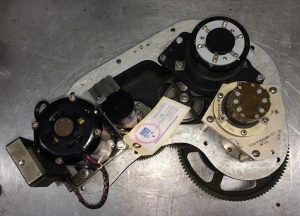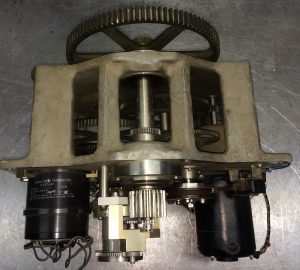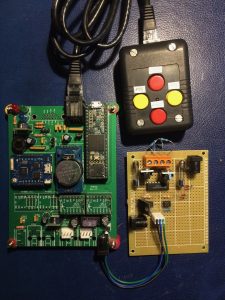GMD SRT
Tom’s Small Radio Telescope for Education Project
(This web page is preliminary…)
I am attempting a project intended to inspire US high school students in the sciences (Something sorely needed these days I think). To quote the European Hands-On Universe (HOU) project “Despite their love of gadgets and technological wizardry, too many young people see science as being uninteresting, distant and, above all, ‘uncool’.”, “Research into how people learn has shown that active learning is the best way to create true engagement of students in a subject,”… In the US, the MIT Haystack Observatory has long developed and promoted the use of Small Radio Telescopes (SRT) as an educational tool for universities and colleges.
Briefly, I am converting an AN/GMD-1 radio theodolite (Called a RAWIN set) orginally designed to precisely track meteorological radiosondes at 1680Mhz, that I acquired from GSA surplus in Kansas City, into a 1420MHz hydrogen line radio telescope to measure Milky Way Doppler shift and map it’s spiral arms. (I know the AN/GMD well, as I maintained one as a student, and used them at Kennedy Space Center during Apollo, see: GMD at KSC ). The AN/GMD-1 is highly portable, as it was designed to be air-dropped, and can be setup in 15 mins… so it will be easy to take around to star parties and the like…, or loan to a high school for a few days. Because the AN/GMD-1 is built like a battleship, after removing the 51Lb antenna scanner “pylon” which is un-necessary in this application, it could carry a somewhat heavier (larger) reflector.
The key is that hydrogen emits a radio signal at exactly 1,420,405,751.786 Hz.
Other Small Radio Telescope Projects
Play the EU promo video EU-HOU Video to understand the pedagogical value, and the EU-HOU site for background.
Here are a few URLs on 21cm wavelength Small Radio Telescopes (SRT) for education, FYI:
MIT Haystack: MIT Small Radio Telescope Project
EU project: EU-HOU Main page and What is EU-HOU
I like the Swedish folks who are doing this: Such a lovely small antenna
Nice write-up by the Chalmers University folks that includes discussion on how you estimate mass of the Milky Way!: Hands-On Radio Astronomy Mapping the Milky Way
Folks can use the Swedish dish remotely from far corners of the world: Mapping the Spiral Structure of the Milky Way
Some have done work to use SRTs for interferometery, such as the UofW WSTAR project.
The Rosman, NC Pisgah Astronomical Research Institute has setup a former NASA 4.6M full motion antenna for 21cm hydrogen line doppler measurements, and made it available on the Internet for teaching. They have a nice map of the 1.42GHz radio sky with several strong hydrogen line sources called out:
They show a typical galactic radio source that is moving at 3.38 x 10**4 m/s (75,608 Mph) toward Earth (i.e. shift up by 160KHz). 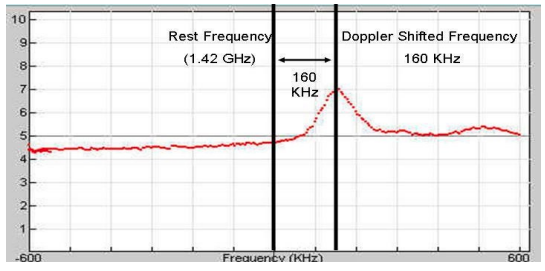
The Smiley 4.6M antenna at 1.42GHz used above probably has a 3dB (half power) beam width of about 3.1 degrees and can resolve hydrogen emission fairly well. The 2.1M GMD-1 antenna is a bit too small and will have a beam width of about 6.7 degrees (spec says 6.5 degrees at 1.68GHz). I am hoping that with 50cm wings added all around, or a different (TVRO) reflector all together, (Will have to set the elevation down limit switches a bit higher), such a 3.1M antenna might yield 4.6 degrees resolution. Others using 2.4M TVRO antennas which resolve about 6 degrees have had fairly good doppler results at 1.42GHz, so the enhanced GMD-1 antenna with its precise pointing & tracking should yield fairly convincing results. A slightly higher gain lower noise LNA (low cost LNAs better then 24dB @ 0.38 – 0.2dB noise are now cheap) might also be necessary, and is a fairly easy enhancement to the $25 24dB @ 0.8 noise figure one I am starting out with.
My AN/GMD-1 Conversion Project
Here is my AN/GMD-1 (actually upgraded and called an ART-1 by US Weather Bureau) at the GSA auction in Kansas City
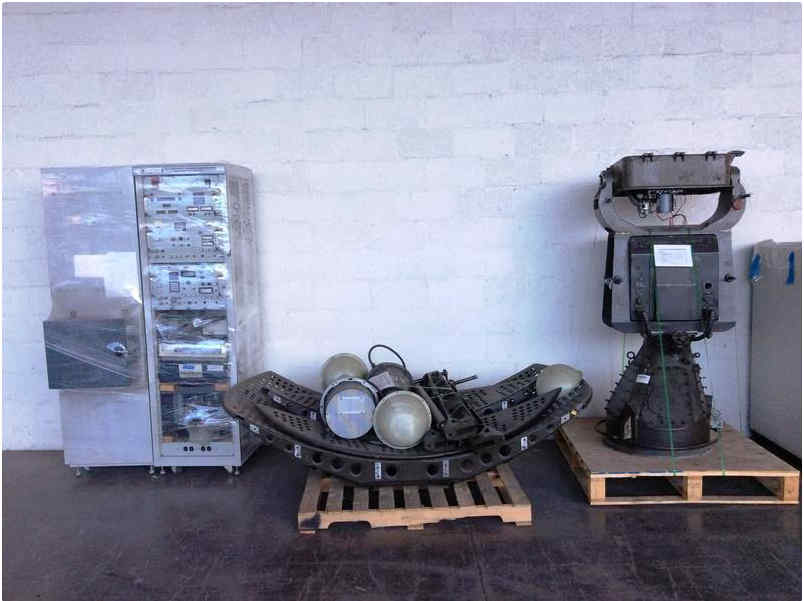
The AN/GMD-1 (Army Navy / Ground Meteorological Direction) RAWIN set (Radio Wind) was used by NOAA and the Army to track weather balloons at 1680Mhz from about 1950, the US weather bureau had at least 25 or so upgraded versions (ART-1) in service until about 2005. It had to be mechanically very precise in order to gather exact wind data at great distances (>200mi). I suspect there were several hundred of them made for several nations, and they were used every where from the south pole, to pacific islands, to Kennedy Space Center. They have been largely replaced by systems using GPS based radiosondes operating at 403Mhz.
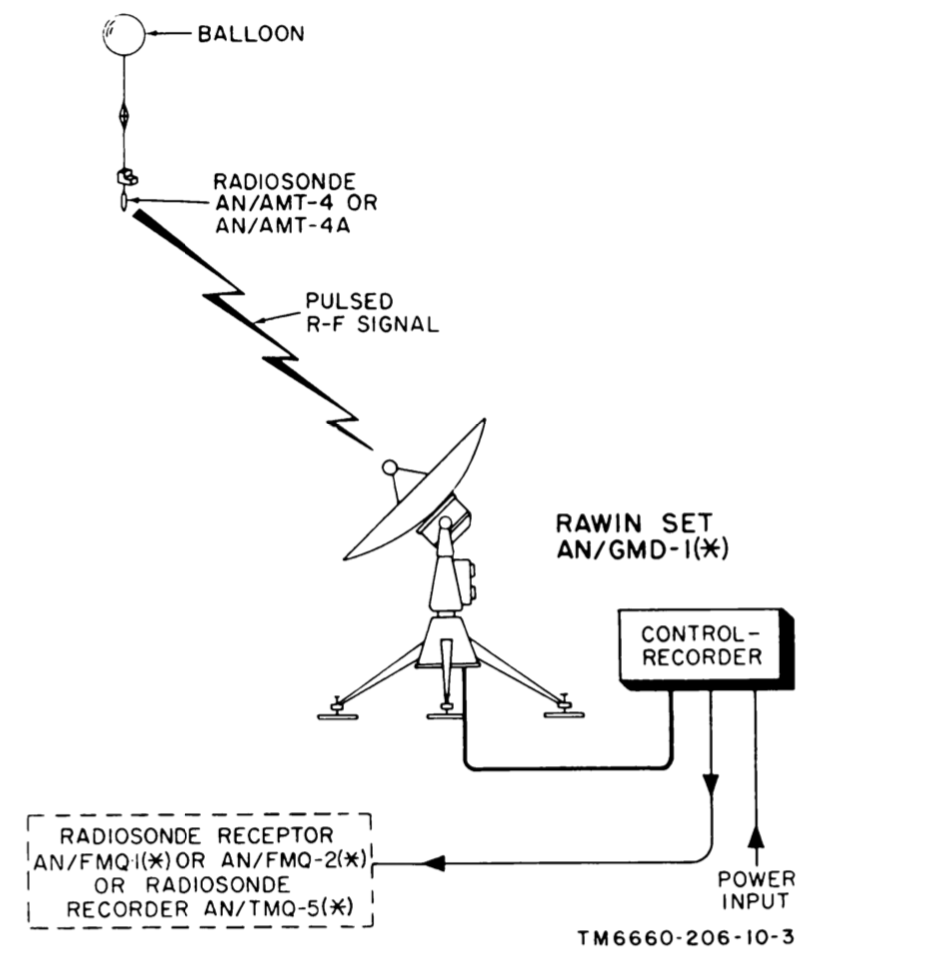
Loaded at the surplus dealer in Springfield, IL who purchased it for $98 at GSA auction…. (I paid him a few hundered for it.)
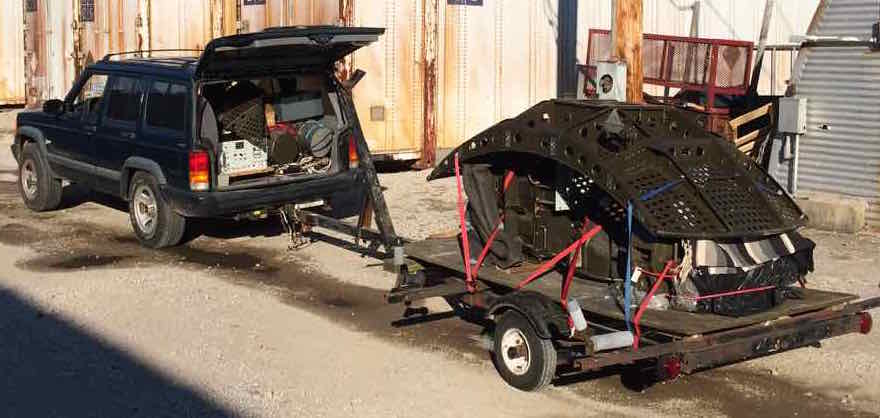
Here is a drawing of what a AN/GMD looks like when setup… 2.1m L band antenna (i.e. holes are 1/10 wavelength), all cast aluminium and stainless steel… spring loaded elevation so no slop, pointing can be accurate to a very small fraction of a degree…! Talk about dowel pins and no backlash!
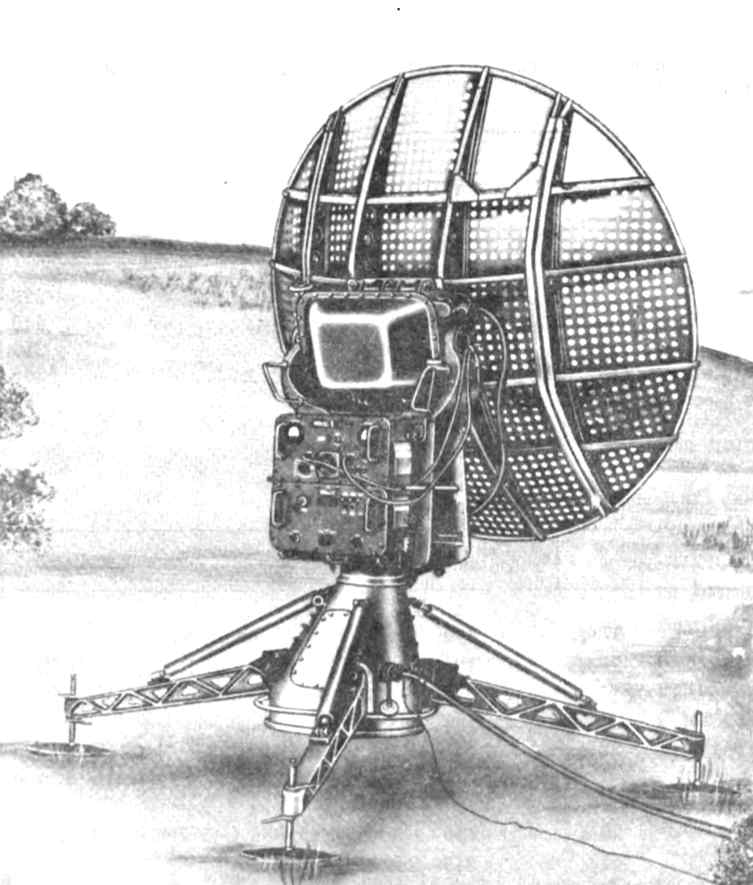
Here is a picture of the one I maintained at age 16 at the Duluth airport… my first WWII Jeep in the background… As far as I can a find, this GMD went to the smelter in about 1990… and is now beer cans.
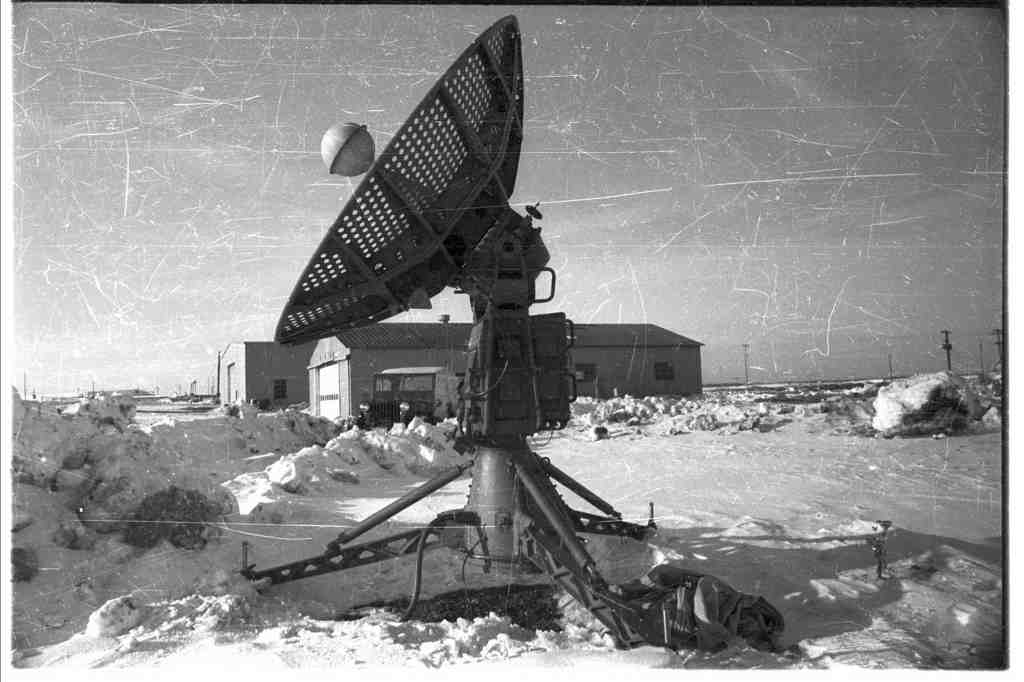
One of the things that makes this project feasible is the advent of very low nose, low cost, Low Noise Amplifiers (LNA), such as the MiniCircuits PSA45043 which is specified to have a gain of 16dB at 1.4Ghz, with a noise figure of 0.8dB! Not bad. It can be purchased for just a few dollars mounted with SMA connectors, ready to go… One can also find very low cost RF noise generators allowing gain and noise measurements to be made, and 1.4Ghz low loss filters as well.
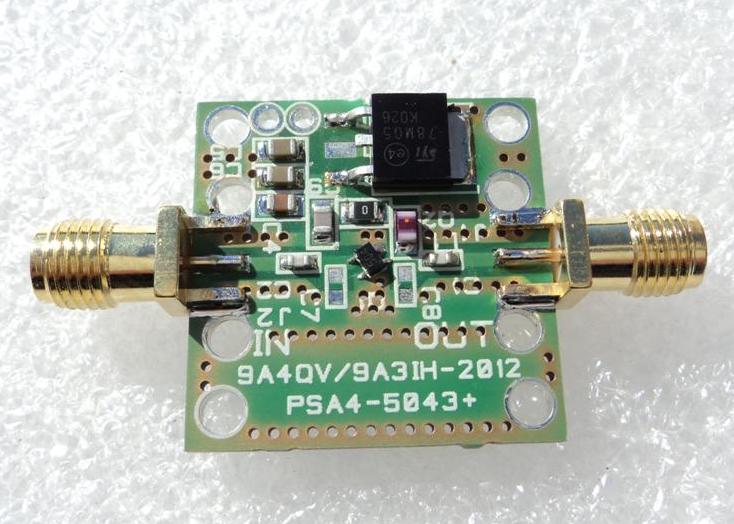
Preliminary Technical Plan
I have discarded ALL the weather bureau ART-1 electronics (1980 vintage Z-80 upgrade crud in the racks). I have surveyed the field for more than a year, looked at Dan Gray’s Sidereal Technology offering, the FreeGo2 work, ServoCAT, the Mel Bartels early work, and many others. I have also looked at what the CNC/Robotics/Skateboard/Scooter folks are doing related to step/direction, and PWM/MOSFET servo driver solutions such as ODrive, Machdrive, Tarocco, CNCdrive, RoboClaw, etc.
At this point I am looking to adapt Howard Dutton’s excellent Arduino based open source telescope stepper controller “OnStep” (see: OnStep ). I will probably replace the analog synchros in the GMD with digital optical (US Digital H6/E6), capacitive (CUI AMT10), or the new Hall based 14 bit position sensors from AMS (AS5047). (They are low cost and small, easy to mount, and provide both incremental and absolute position via SPI and/or ABI. See: as5047 ). Initially I will try to adapt OnStep’s step/direction output to drive one of the open source servo drivers that have their own separate encoder feedback loop, such as “ODrive” (see: odrive), Tarocco, or even a new one based on the nifty new TMC4671 chip, and may replace the older split series motors with “brushless” “outrunner” high performance servo motors. I am currently testing the AS5047 using an uno board and the fairly simple/clean step/dir to closed loop servo package called “deservo” that has interactive console control of the servo P,I,D parameters and position, and a simple tuning graph. See: dcservo It may also be possible to keep OnStep in sync with the step/dir servo driver(s) by adapting the existing OnStep encoder support add-on, and/or modify OnStep to use the AS5047’s SPI interface directly.
An LNA (see: lna4all and VLNA) at the prime focus will directly feed a Software Defined Radio (SDR) such as the USRP N200 (see: ettus) and/or the RTL-SDR stick (see: rtl-sdr), controlled by GNU Linux Software (See: gnuradio ). I may add wings on the dish, or replace it with a larger lite weight TVRO dish, to bring the 3dB beam width closer to 4 deg. Results will be processed by existing SRT spectrum analyzer software, such as the SALSAJ stuff from EU-HOU. If I can put together a second system, I want to look into using the Bodnar GPS Precision Frequency Reference that provides 1×10-12 stability to make an interferometer.
I think my conversion of an AN/GMD-1 is much better as a platform than using an old C band TVRO antenna from some bar with added screw-drive AZ and EL positioners… (To know more about the AN/GMD, see: TM 11-6660-206-12 )
After having this idea, I recently found some folks at the Utah State had used an AN/GMD-1 for a small satellite tracker, which bodes well for this project, see: Design of a Satellite Tracking Station for Remote Operation and Multi-User Observation like so:
Finding More AN/GMD-1s to Convert – a long shot…
It looks like I am too late to catch any of the 20 or so ART-1 AN/GMD-1 that were replaced as part of the NOAA Radiosonde Replacement program of about ten years ago. From what I can find, all the ART-1 AN/GMD-1 were probably sent to local GSA auctions sometime around 2010, and the NOAA National Reconditioning Center in KC has liquidated most of its parts inventory in recent years due to a move. I would love to recover more AN/GMD-1 stuff, and clone my work to build additional SRTs for loan to schools etc. or help others do so. Attached here is a PDF spreadsheet of GMD-ART_Parts I made listing items of interest… as you can see the NOAA National Reconditioning Center in KC had numbers of some items as late as 2005…. so they may still be sitting in surplus dealers yards in the KC area…. but more likely the AN/GMD-1 has gone the way of the Dodo…. so sad, as it was mechanically superb, and could carry a heavy dish with great precision and no slop. I recently found some parts just 20mi from my home, rotting away, that came from Camp Ripply MN. I recovered what I could. I have also tried to find out what became of the Radio Research Instruments inventory in Waterbury CT, also long gone. (But I did find a nice complete now rare SCR-584 for US Army Air Defense Artillery Museum at Ft. Sill OK. The director there was very happy, and they are currently restoring it for display.) I am also looking into building an interferometer, and have just enough spare parts to build a second AN/GMD-1 based SRT for that…
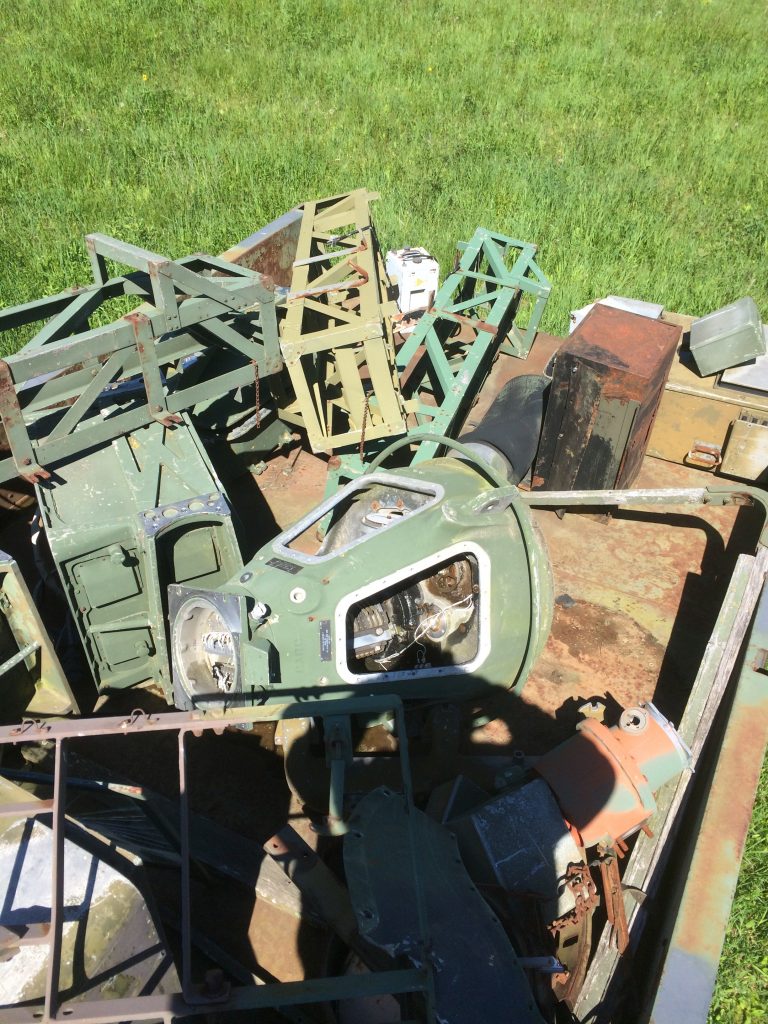
Update Sept 2019:
I continue to scrounge stuff… won some legs and a second antenna on auction for $100, and also eventually purchased from a scrap dealer two NOS pedestals still in the crate! for several hundred… Well on my way to building two more so I can make an interferometer.
Progress… getting ready to wire up Arduino based servo control…
One of the items I was worried about is the elevation unit counter balance springs, as I suspect when they break (all springs break eventually) they would be very hard to replace… O frabjous day! Callooh! Callay! I got the remaining NOAA stock of some 15 or so from a surplus dealer… Not to mention the several spare refurbished elevation and azimuth drives I already have. Most of the other mechanical parts are standard Timken bearings and seals etc.
March 2020:
Here is a picture of the open source On-Step Arduino based telescope controller I am using, together with another Arduino running DC Servo and a modified VFET H bridge to drive the existing GMD servo motors that have CW/CCW split windings. The 4,950 gear reduction of the GMD drives, together with the 12 bit shaft encoders I am using, I should yield very precise reproducible positioning and tracking.
